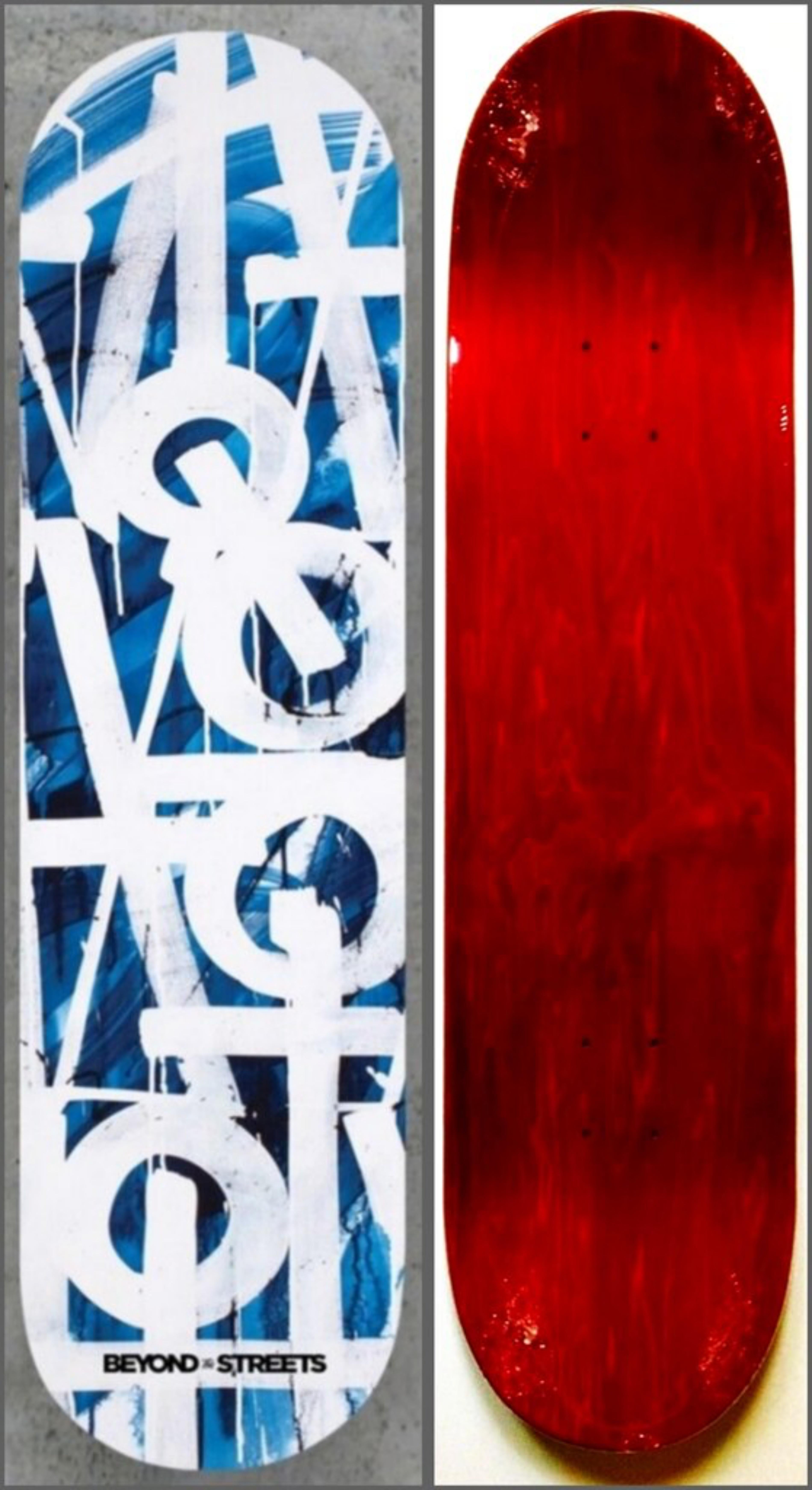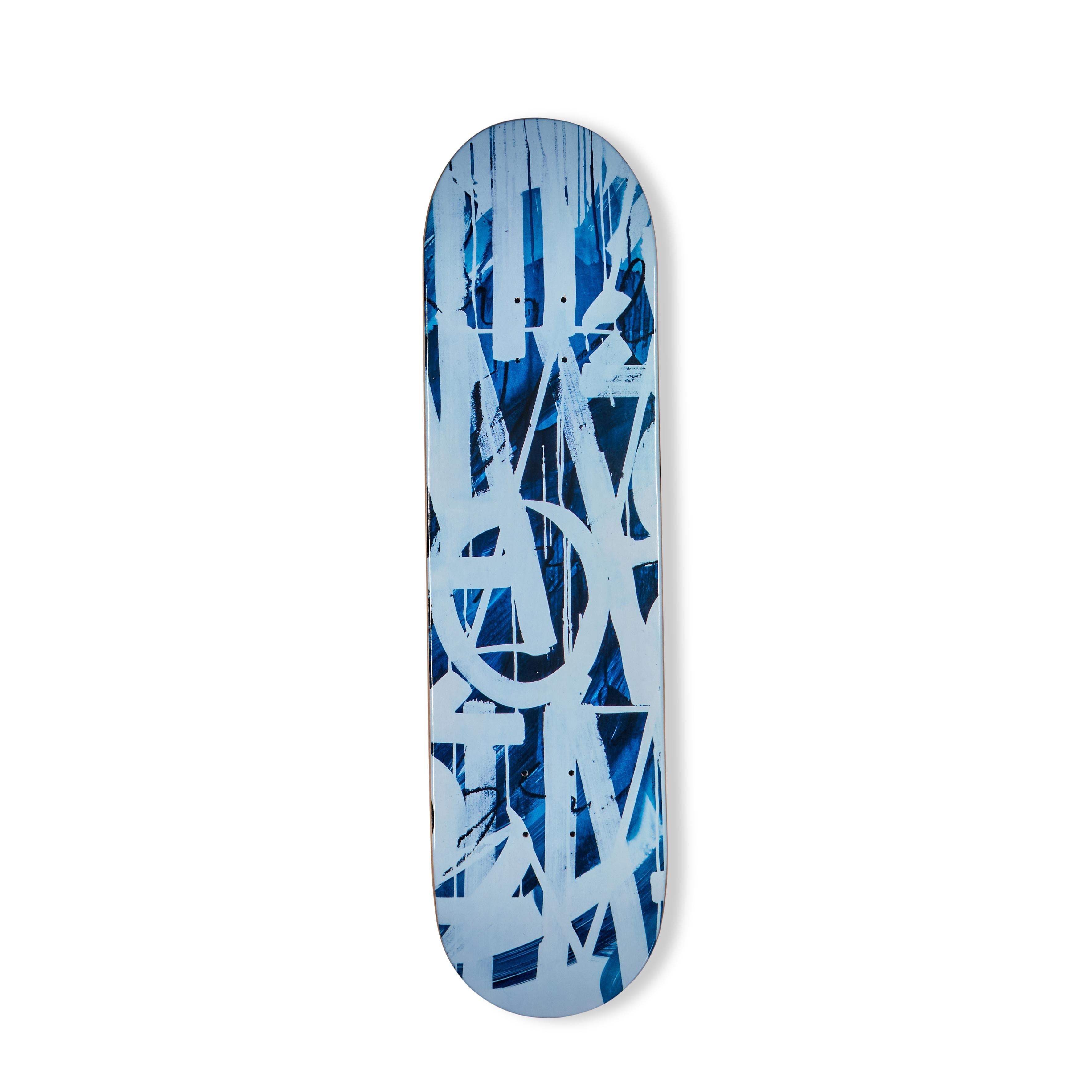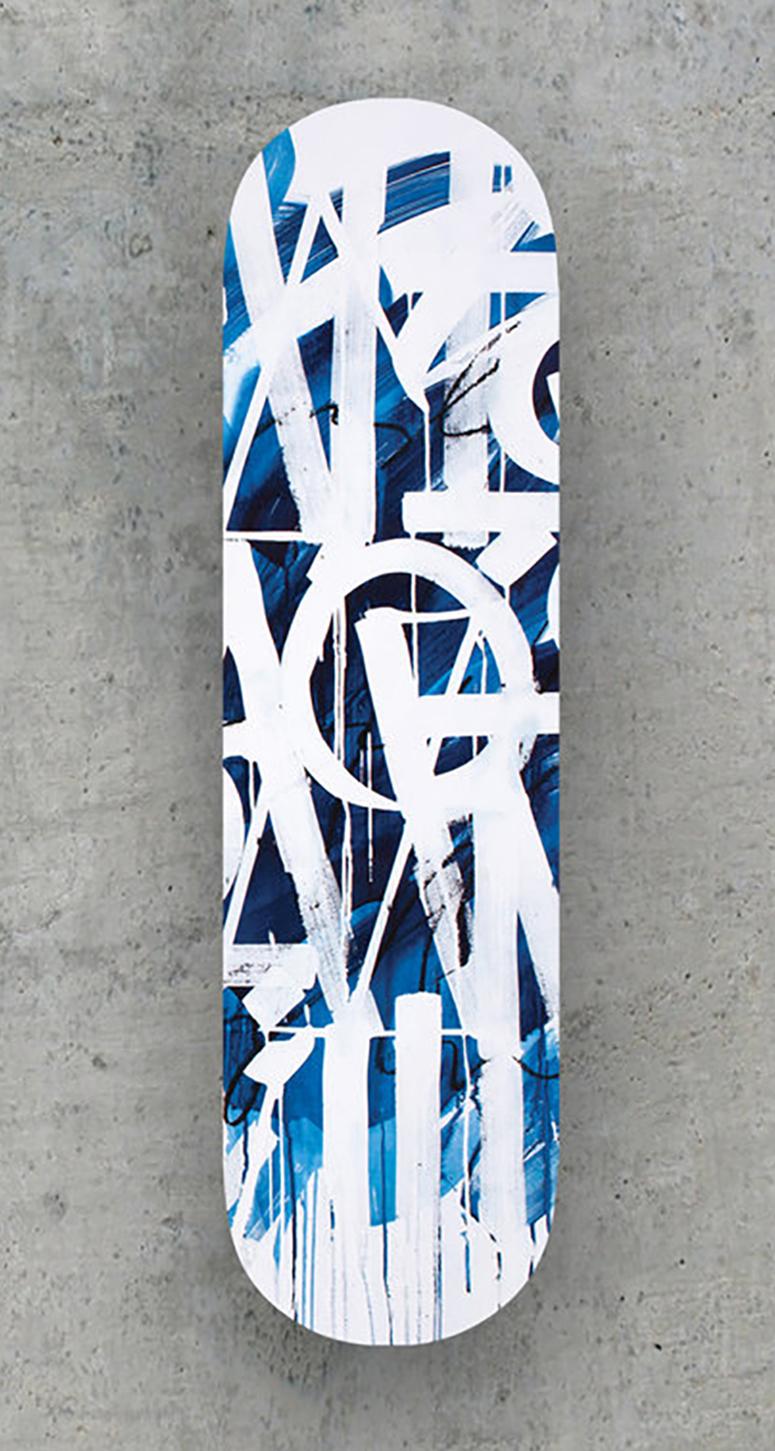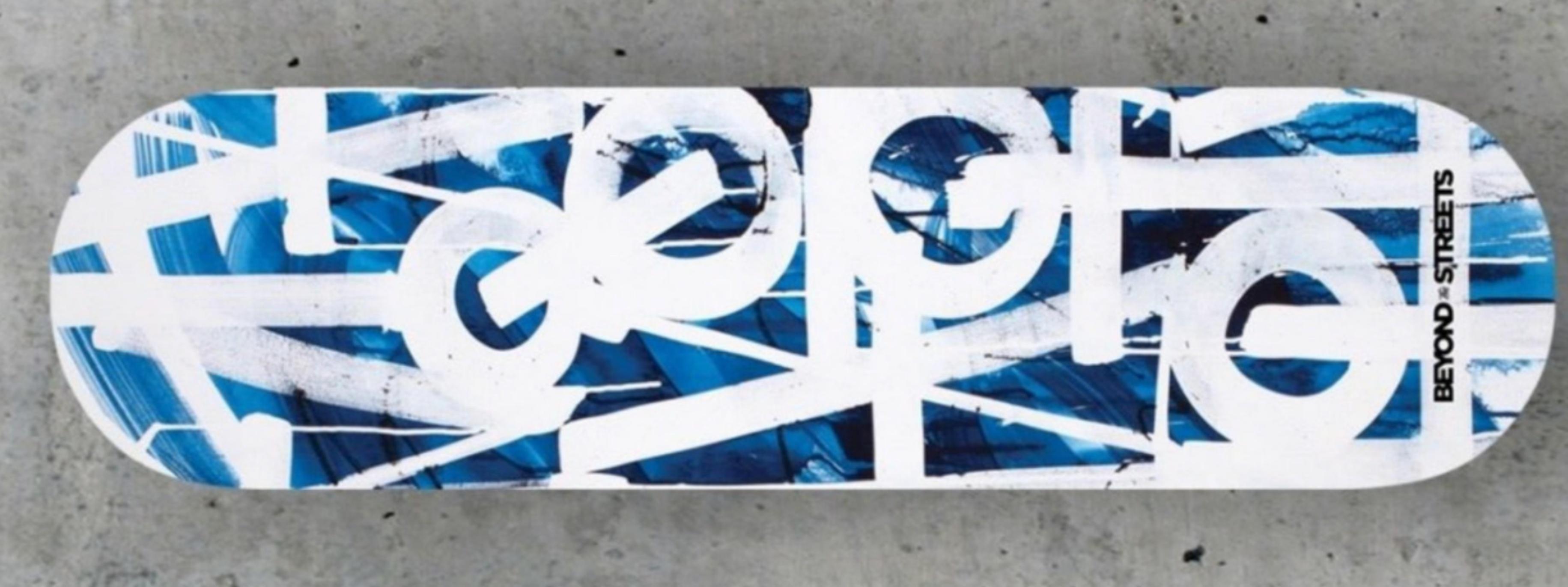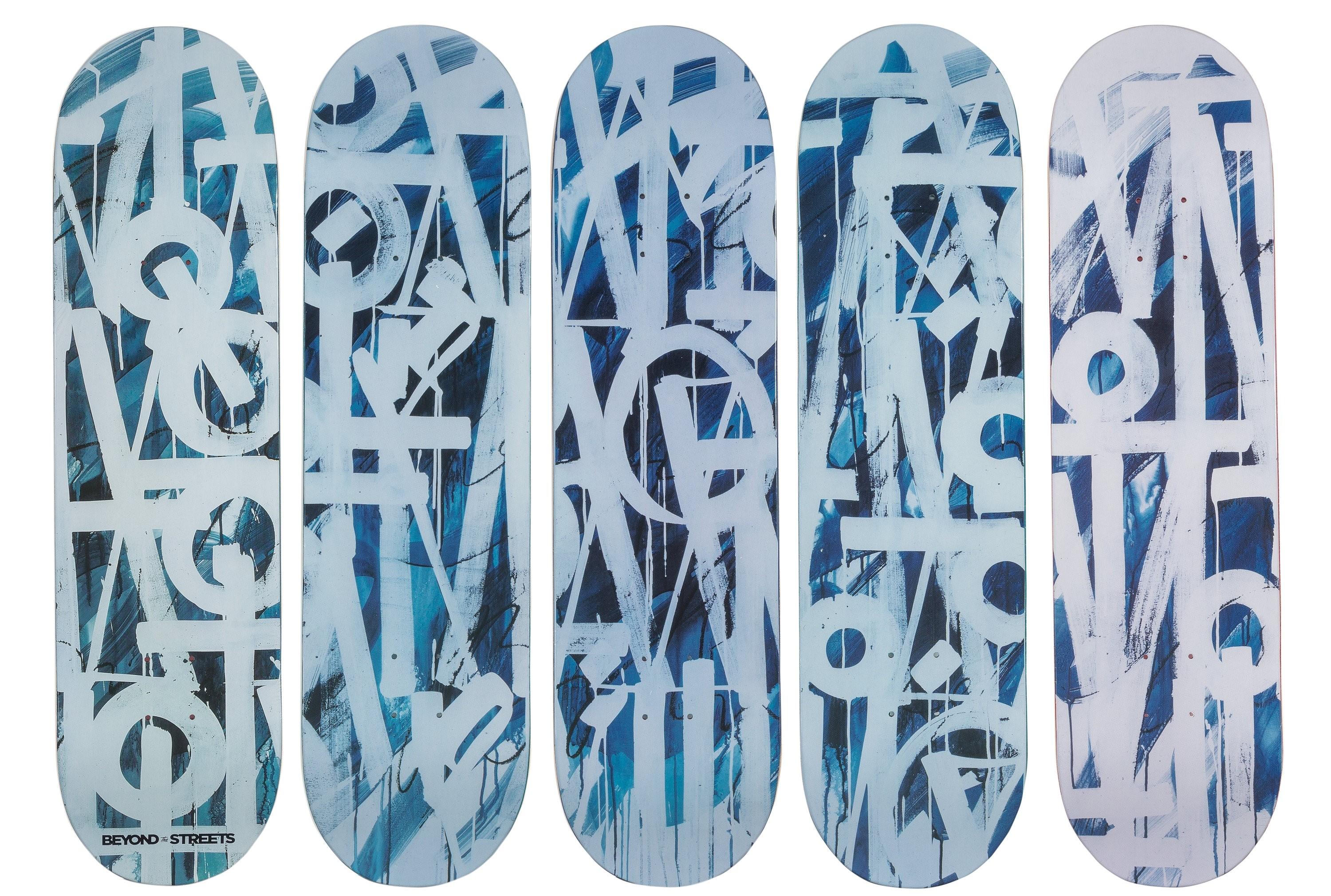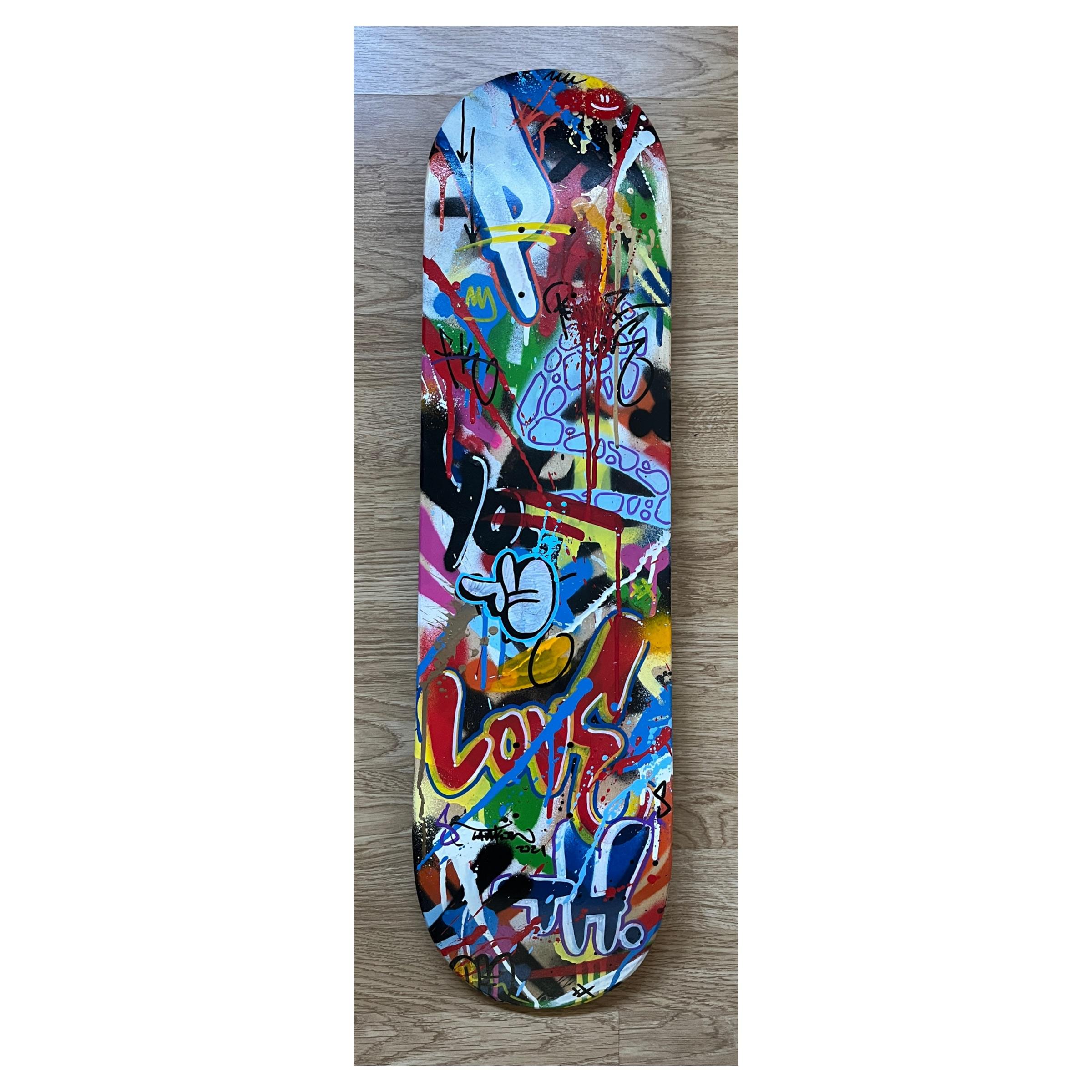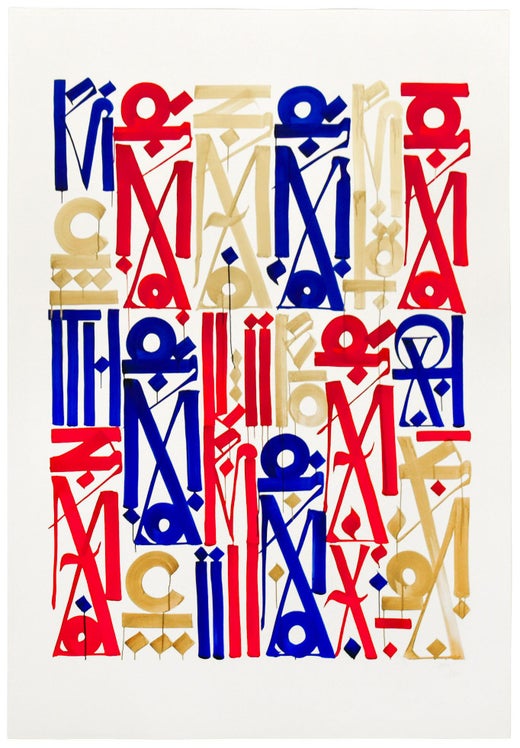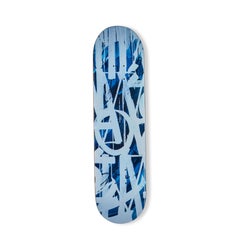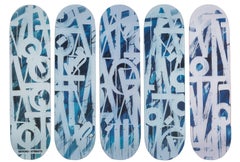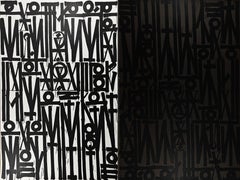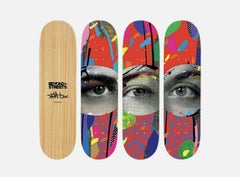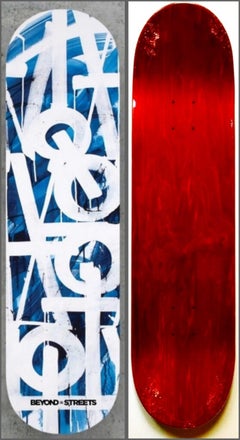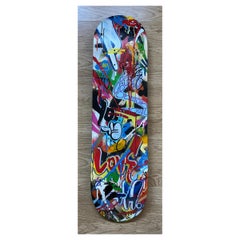RETNARETNA X BTS Silkscreen Skateboard Edition of 1002018
2018
About the Item
RETNA
Born Marquis Lewis on March 24, 1979, in Los Angeles, CA, Retna joined the Los Angeles mural scene as a teenager.
As a youth of African-American, El Salvadorian and Cherokee descent growing up in Los Angeles, Retna was mesmerized by the gang graffiti that surrounded him. He began practicing the art form and adopted the name Retna from a Wu-Tang Clan song. In the mid-nineties, he began making murals on walls, trains and freeway overpasses throughout the city.
Retna transformed from a street artist to a break-out star in the contemporary art world. He garnered attention from Usher, an R&B artist, who commissioned the artist to create a portrait of Marvin Gaye, and MOCA director Jeffrey Deitch, who wrote in the September 2010 issue of Juxtapoz “one of the most exciting exhibitions...this year, anywhere, was Retna's exhibition at New Image Art.” MOCA also featured Retna's work in the major “Art in the Streets” exhibit, the first major U.S. museum survey of graffiti and street art.
At first glance, Retna’s prints and paintings look like an undiscovered ancient script: a series of hypnotic symbols — complex, beautiful and captivating. But he has created an original alphabet, fusing together influences from ancient Incan and Egyptian hieroglyphics, Arabic, Asian calligraphy, graffiti, blackletter, Roman lettering and Hebrew script.
Each piece carries meaning, conveying an event or dialogue that the artist experienced. The writing does not belong to a particular language. Retna explains, “I want my text to feel universal. I want people from different cultures to all find some similarity in it — whether they can read it or not.” He has also stated that “it is important to have art in the streets as a cultural fabric that is woven into the city for the upliftment of civic pride.”
Retna’s works are in the private collections of Jeffrey Deitch, Swizz Beats, Usher, and Dave Chappelle, among many others. His large-scale mural across the eastern exterior of Restoration Hardware’s new gallery in West Palm, Florida, was valued at $500,000 by the city’s Art in Public Places program.
Retna has collaborated with major fashion brands including Nike, Louis Vuitton, Chanel and Helmut Lang, and designed the artwork for Justin Bieber’s Purpose album cover. RETNA also acted as the artistic designer for the San Francisco and Washington National Opera’s production of “Aida."
Find original Retna art on 1stDibs.
(Biography provided by New Union Gallery)
- ShippingRetrieving quote...Shipping from: Orlando, FL
- Return Policy
More From This Seller
View All2010s Street Art More Art
Wood, Screen
2010s More Art
Wood
2010s Street Art Abstract Prints
Glitter, Screen
2010s Pop Art More Prints
Screen
2010s Still-life Prints
Wood Panel, Screen
15th Century and Earlier Street Art Animal Prints
Lithograph, Screen
You May Also Like
2010s Street Art More Art
Screen, Maple
21st Century and Contemporary Pop Art More Art
Offset
2010s Street Art More Art
Maple, Screen
2010s Street Art Mixed Media
Screen
2010s Pop Art More Art
Wood, Digital
21st Century and Contemporary Street Art Abstract Paintings
Acrylic
